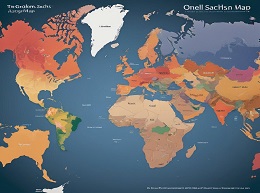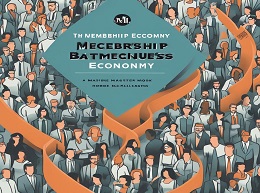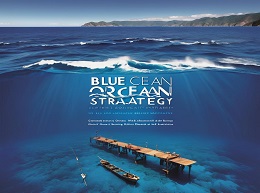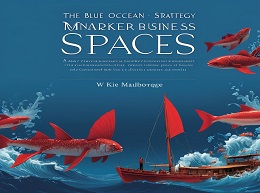The Growth Map: Economic Opportunity in the BRICs and Beyond

The Growth Map: Economic Opportunity in the BRICs and Beyond
Jim O'Neill's book, "The Growth Map: Economic Opportunity in the BRICs and Beyond," offers an insightful exploration into the economic potential of the BRIC nations (Brazil, Russia, India, and China) and other emerging markets. As a renowned economist and former chairman of Goldman Sachs Asset Management, O'Neill presents a compelling narrative that delves into the dynamics of these economies and their implications for global growth. This review will provide an in-depth analysis of the book, highlighting its key themes, practical insights, and illustrative examples to engage readers.
The Genesis of BRICs
Jim O'Neill is credited with coining the term BRICs in 2001, a concept that quickly gained traction in both academic and financial circles. The acronym represents four rapidly developing economies poised to reshape the global economic landscape. O'Neill's book elaborates on his initial thesis and examines how these countries have evolved since the early 2000s.
Example: Initial Predictions
When O'Neill first introduced the BRICs concept, he predicted that these economies could collectively surpass the G7 nations in terms of GDP by 2050. This bold prediction spurred considerable interest and debate among economists and policymakers worldwide.
Economic Potential of the BRIC Nations
O'Neill's central thesis revolves around the immense economic potential of Brazil, Russia, India, and China. He argues that these countries possess unique attributes that position them as future economic powerhouses.
Brazil: The Agricultural Giant
Brazil's vast natural resources and agricultural capacity make it a significant player in the global market. O'Neill highlights Brazil's ability to produce and export agricultural commodities, such as soybeans and coffee, as a key driver of its economic growth.
Example: Brazil's Soybean Production
Brazil has become one of the world's largest soybean producers, leveraging its fertile land and favorable climate. This agricultural boom has not only bolstered Brazil's economy but also positioned it as a critical supplier in the global food chain.
Russia: Energy and Natural Resources
Russia's wealth of natural resources, particularly in oil and gas, underpins its economic strength. O'Neill discusses how Russia's energy exports have fueled its economic expansion and geopolitical influence.
Example: Gazprom's Role
Gazprom, Russia's state-controlled energy company, plays a crucial role in the global energy market. Its vast reserves and extensive pipeline network enable Russia to exert significant influence over European energy supplies.
India: The Services Powerhouse
India's burgeoning services sector, particularly in information technology and business process outsourcing, has been a major growth driver. O'Neill explores India's demographic advantages and its potential to become a global services hub.
Example: Infosys and TCS
Indian IT giants like Infosys and Tata Consultancy Services (TCS) exemplify the country's strength in the services sector. These companies have established themselves as global leaders in IT services, contributing significantly to India's economic growth.
China: The Manufacturing Behemoth
China's rapid industrialization and manufacturing prowess have made it the world's factory. O'Neill examines China's economic transformation and its impact on global trade and investment.
Example: Shenzhen's Transformation
Shenzhen, once a small fishing village, has transformed into a global manufacturing and technology hub. This remarkable transformation underscores China's ability to drive economic growth through strategic planning and investment in infrastructure.
Beyond BRICs: The Next Wave of Emerging Markets
O'Neill's analysis extends beyond the BRIC nations to include other emerging markets with significant growth potential. He identifies countries like Mexico, Indonesia, South Korea, and Turkey (collectively referred to as MIST) as future economic contenders.
Example: Indonesia's Economic Growth
Indonesia's large population and abundant natural resources position it as a key emerging market. O'Neill highlights Indonesia's economic reforms and its potential to become a major player in the global economy.
Challenges and Opportunities
O'Neill acknowledges the challenges that BRIC and other emerging markets face, including political instability, corruption, and infrastructural deficits. However, he remains optimistic about their long-term prospects and the opportunities they present for investors and businesses.
Example: Corruption in Brazil
While Brazil has made significant economic strides, it continues to grapple with corruption and political instability. O'Neill discusses the impact of these challenges on Brazil's growth trajectory and the measures being taken to address them.
Investing in Emerging Markets
O'Neill provides practical advice for investors looking to capitalize on the growth potential of emerging markets. He emphasizes the importance of a long-term perspective and diversification to mitigate risks.
Example: Diversification Strategy
Investors can diversify their portfolios by including a mix of stocks, bonds, and real estate from various emerging markets. This approach helps spread risk and increase the potential for high returns.
Policy Recommendations
For policymakers, O'Neill offers recommendations to foster sustainable growth in emerging markets. He advocates for reforms that enhance governance, improve infrastructure, and promote education and innovation.
Example: Education Reforms in India
India's emphasis on improving education, particularly in science and technology, is crucial for sustaining its growth in the services sector. O'Neill discusses how educational reforms can equip the workforce with the skills needed to drive innovation and economic development.
The Future of Global Growth
"The Growth Map: Economic Opportunity in the BRICs and Beyond" is a compelling read that provides a thorough analysis of the economic prospects of emerging markets. Jim O'Neill's insights are grounded in extensive research and his deep understanding of global economic trends. For investors, policymakers, and business leaders, the book offers valuable perspectives on harnessing the potential of these dynamic economies.













